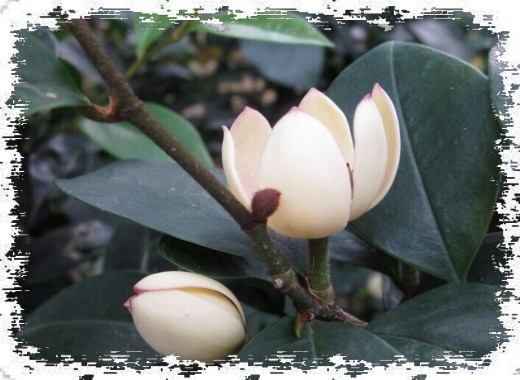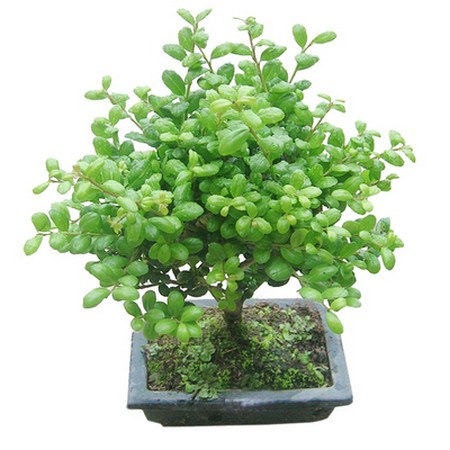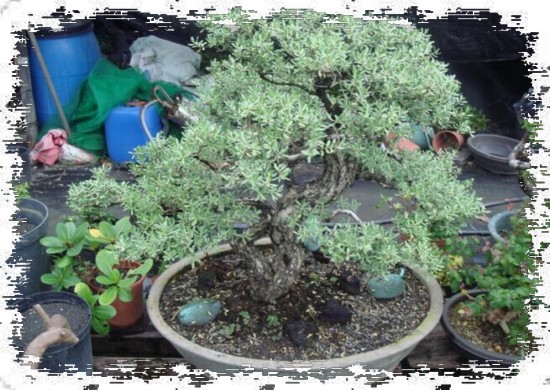The making method of Michelia bonsai
Michelia mollissima, also known as Bark bag incense and Mountain Vibrator, is an evergreen shrub or small tree of the Magnoliaceae family. Both Ginkgo biloba and Ginkgo biloba belong to the Mesozoic tree species left after the Quaternary glacier, commonly known as "living fossils". Although the real wild areas have not been found so far, they are widely distributed in broad-leaved or coniferous sparse forests in the plateaus of eastern and central Yunnan, as well as roadsides and streams.

Michelia is 3 to 4.5 feet high, much branched, branches glabrous. Simple leaves alternate, leathery, rectangular-elliptic or Obovate-lanceolate, entire, petiole ca. 2 cm long, both sides glabrous, glossy, reticulate venation roots obvious. Leaf axils have buds, covered with reddish brown hairs, buds covered with large bracts, bracts densely brown sericeous, slightly open. The flowering period is two to three months and is extremely fragrant. The content of aromatic oil is about 0.4%, which is an important spice in food and cosmetic industry.
Due to the cutting of woodcutters, the gnawing and trampling of livestock, coupled with the barren living areas and the inherent fragrance of Michelia yunnanensis, ants are greatly tempted to nibble away. As a result, it is easy to find stout, dense branches, very varied, scarred, bony, clumsy, tangled pile heads. Therefore, Michelia yunnanensis has a high ornamental value.
Michelia is adaptable and still grows well at a temperature of five degrees Celsius. Therefore, it can only be excavated in winter, especially in front of shady leaves in February and March, and the survival rate is higher. Before mining, we should first choose the pile head which is short and strong, the trunk is more changeable, the transition is natural, the branch is appropriate, and the pile head has a bright future.
Then hold the trunk with your hand and shake it forcefully. If the pile head is easier to shake, the pile is likely to have less root or fibrous root, and there are only one or two main roots. This pile should be given up and it is more difficult to survive. If the pile head appears robust in shaking, and the traction force around the pile head in fretting is clear, this kind of pile generally has developed roots and is easy to dig and maintain.
Of course, the above method has its limitations, as far as possible to relax the excavation site, careful force, as little as possible to move the whisker root, the main root can be cut off. The whole pile head is wrapped in a large plastic bag, which is slightly sprayed with water or some moisturizing moss to reduce the consumption of nutrient water. Cut the broken root, split root and overlong thick root short and flat, cut off the unnecessary branches and leaves, then disinfect the whole pile head in 0.5% potassium permanganate solution for 10 minutes, and coat the root with 500ppm indolebutyric acid. It is best to choose tile basin or wooden box, basin soil for 5 parts of river sand, five parts of rotten leaf soil to mix well, put the pile head in the tile basin.
When potting, it is best to use bamboo sticks to combine the soil and fibrous roots organically. Pour water thoroughly, cover the whole pile head with a plastic bag, fasten the mouth of the plastic bag to the root of the pile, expose the whole tile basin and soil surface, and leave one or two small holes in the plastic bag to facilitate ventilation and place it in the shade of ventilation. After this treatment, not only the corresponding humidity and temperature of the pile head are guaranteed, but also the condition of exchanging air between the beard root and the beard root is satisfied. Potassium permanganate can not only inhibit anaerobes, but also prevent the breeding of mold in high humidity environment, so that the possibility of pile head mildew is reduced.
Michelia yunnanensis is most afraid of water stains, and it is better to keep the basin soil slightly dry, which is the key to survival. From May to June, when the new leaves sprout to 10 centimeters, use cigarette butts to gradually burn holes in the plastic bags, so that the pile ends gradually adapt to the external climate before the plastic bags can be completely removed.
Time: 2019-05-26 Click:
- Prev

Production of tortoise shell holly bonsai
Tortoise shell holly is named because the leaf surface is protruding in the shape of tortoise shell. It is a small evergreen shrub of holly family. The old stem is gray or grayish brown, the leaves are oval, alternate, entire, the new leaves are tender green, the old leaves are dark green, thick, leathery and shiny. With vigorous and simple branches and dense green leaves, it is very suitable for making bonsai.
- Next

The method of making jade hibiscus bonsai
Jade hibiscus, the scientific name cactus, is the general name of the cactus family of Caryophyllaceae, alias cactus, cactus fan, overlord tree, flame, fire cactus, jade hibiscus, pill, fairy meat, fairy, often grow in desert and other dry environment, is a class of succulent plants. Primitive cactus plants have leaves.
Related
- Fuxing push coffee new agricultural production and marketing class: lack of small-scale processing plants
- Jujube rice field leisure farm deep ploughing Yilan for five years to create a space for organic food and play
- Nongyu Farm-A trial of organic papaya for brave women with advanced technology
- Four points for attention in the prevention and control of diseases and insect pests of edible fungi
- How to add nutrient solution to Edible Fungi
- Is there any good way to control edible fungus mites?
- Open Inoculation Technology of Edible Fungi
- Is there any clever way to use fertilizer for edible fungus in winter?
- What agents are used to kill the pathogens of edible fungi in the mushroom shed?
- Rapid drying of Edible Fungi

